Training Checklist Formats (With Examples + PDF Download)
Looking for the perfect training checklist format? Explore practical examples, key steps, and a free downloadable PDF to streamline employee training.
Looking for the perfect training checklist format? Explore practical examples, key steps, and a free downloadable PDF to streamline employee training.
%20(2).webp)
Companies that use training checklists are usually one step ahead of their competition.
That’s right.
A structured training checklist format can do wonders for you. It keeps the process consistent, ensures nothing slips through the cracks, and makes onboarding smoother for everyone.
In this guide, we’ll walk you through proven checklist formats for various training programs and give you a free PDF download to get started right away.
A training checklist is more than just a to-do list. In simple terms, it is a guide keeping both trainers and learners on track and making sure no crucial step is left out.
It works like a roadmap, especially useful when training covers compliance or safety topics where skipping even one step could cause problems. However, it goes beyond your organization.
This checklist creates consistency, reduces mistakes, and makes training easier to repeat across teams. That’s why companies investing in structured training programs actually see 218% higher income per employee compared to those that don't.
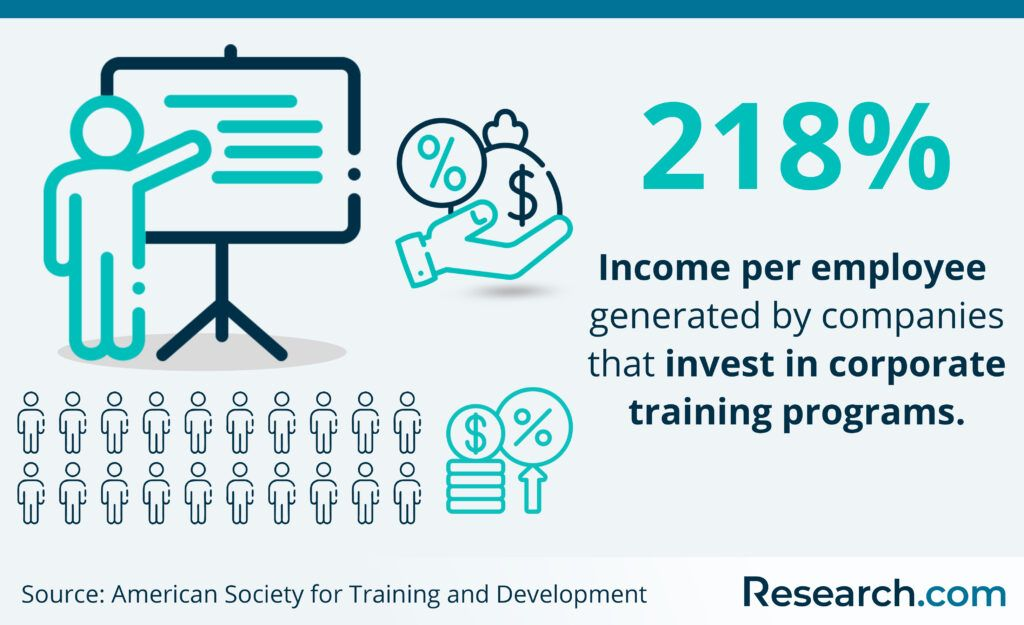
There’s no doubt about the benefits of a training checklist, but it has to be created in the right format. Otherwise, instead of adding clarity, it can create confusion.
To make it easier for you, we’ve designed eight training checklists with proper formats. You can download these ready-made checklists and use them directly in your company, or simply review the formats and create your own customized versions.
Let’s walk through the right training checklist formats one by one.
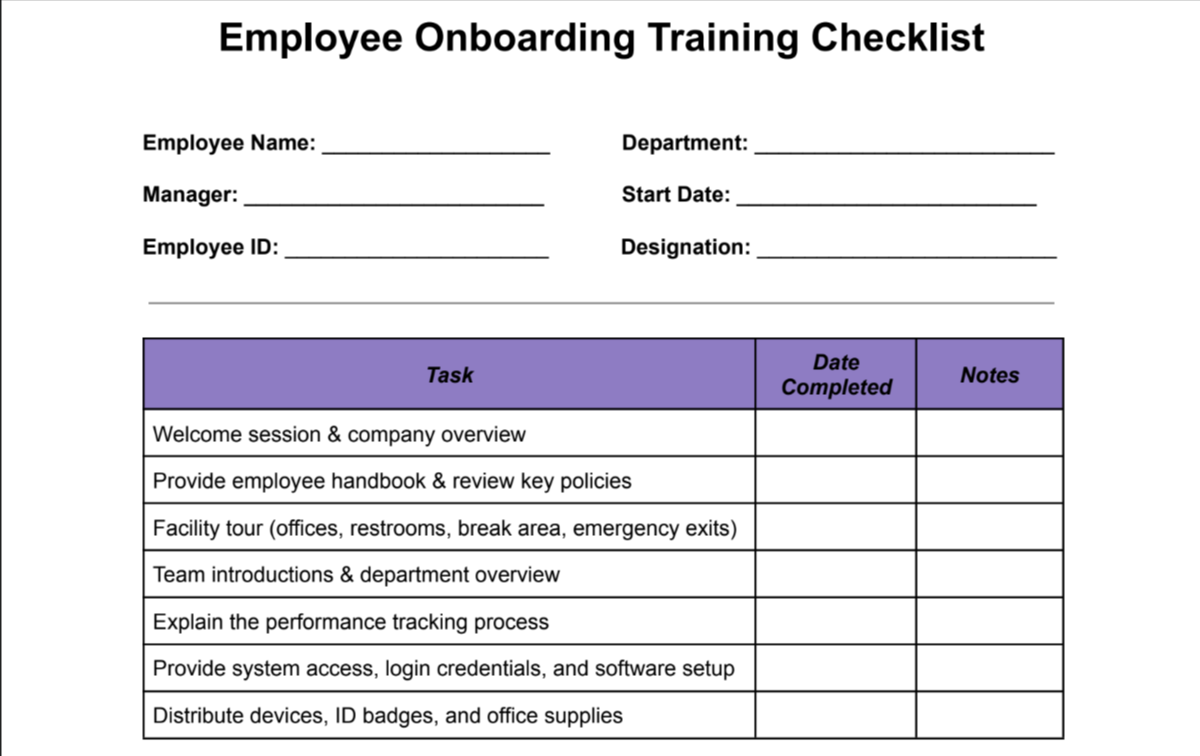
An onboarding checklist makes a new hire feel prepared instead of lost on their first day. It typically covers tasks such as setting up email accounts, explaining company policies, assigning mentors, and guiding employees through their roles.
Simple steps like these cut down confusion and build confidence early on. However, the real value of onboarding checklists is employee retention.
Studies show that organizations with a strong onboarding process improve new hire retention by 82%. This number means you’re saving hiring costs and avoiding the disruption of high turnover.
The onboarding checklist is an excellent way for managers to ensure they don't forget even the minor details for new hires.
Download the Onboarding Checklist PDF
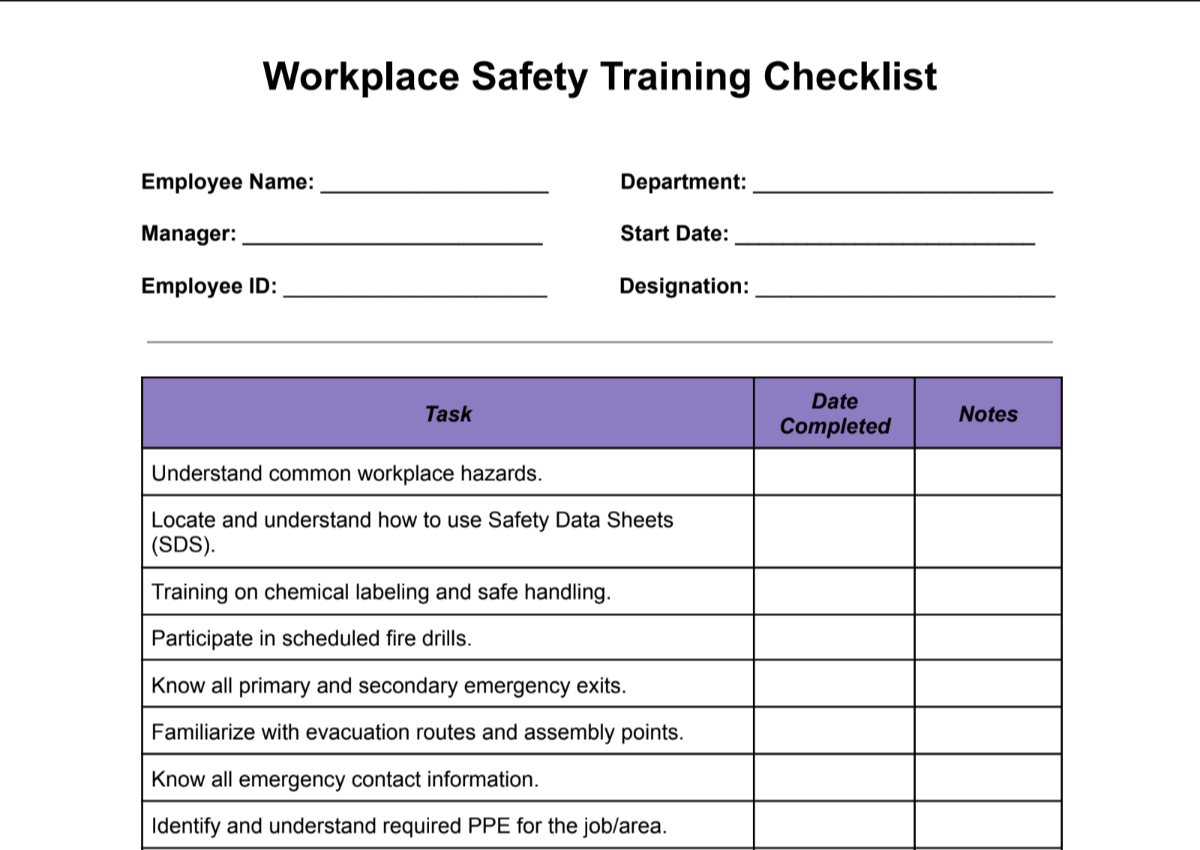
A safety training checklist is used for protecting lives, rather than just being compliant. It includes hazard communication, fire drills, emergency exits, PPE (personal protective equipment) instructions, and reporting procedures.
Without it, even the smallest of risks can snowball into major accidents. In fact, in 2023, the cost of workplace injuries was $176.5 billion. This number shows why a proper safety checklist is a worthwhile investment for any business.
By following this checklist, HR ensures every employee receives the same safety guidance. And when safety feels like a shared responsibility, teams perform with more confidence and fewer disruptions.
Download the Safety Checklist PDF
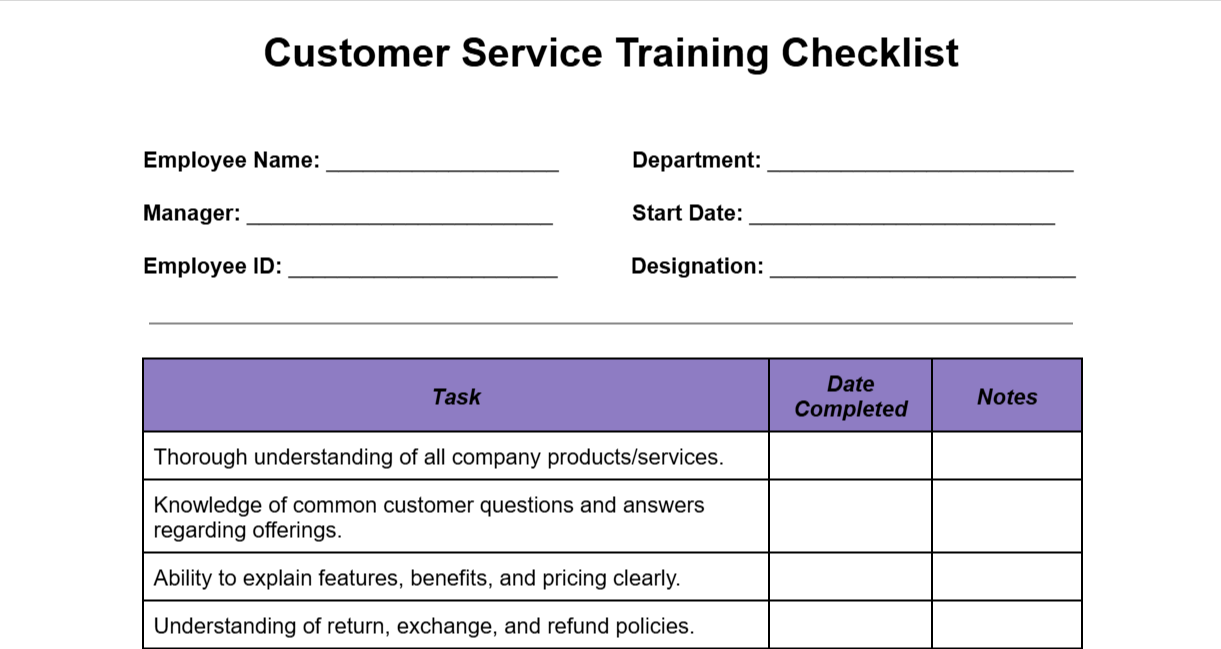
Next up is the customer service training checklist format. This checklist helps employees deliver consistent and professional experiences. Typical list items include product knowledge, communication skills, complaint-handling techniques, and empathy exercises.
These items form the foundation of building trust with customers. Plus, there’s a kicker, as 89% of consumers tend to shop again after they’ve had a positive customer experience. That clearly shows why training checklists matter.
When HR uses a checklist, they’re not leaving customer experience to chance. Each employee follows the same standards, which reduces frustrations and ensures customers walk away happy instead of annoyed.
Download the Customer Service Checklist PDF
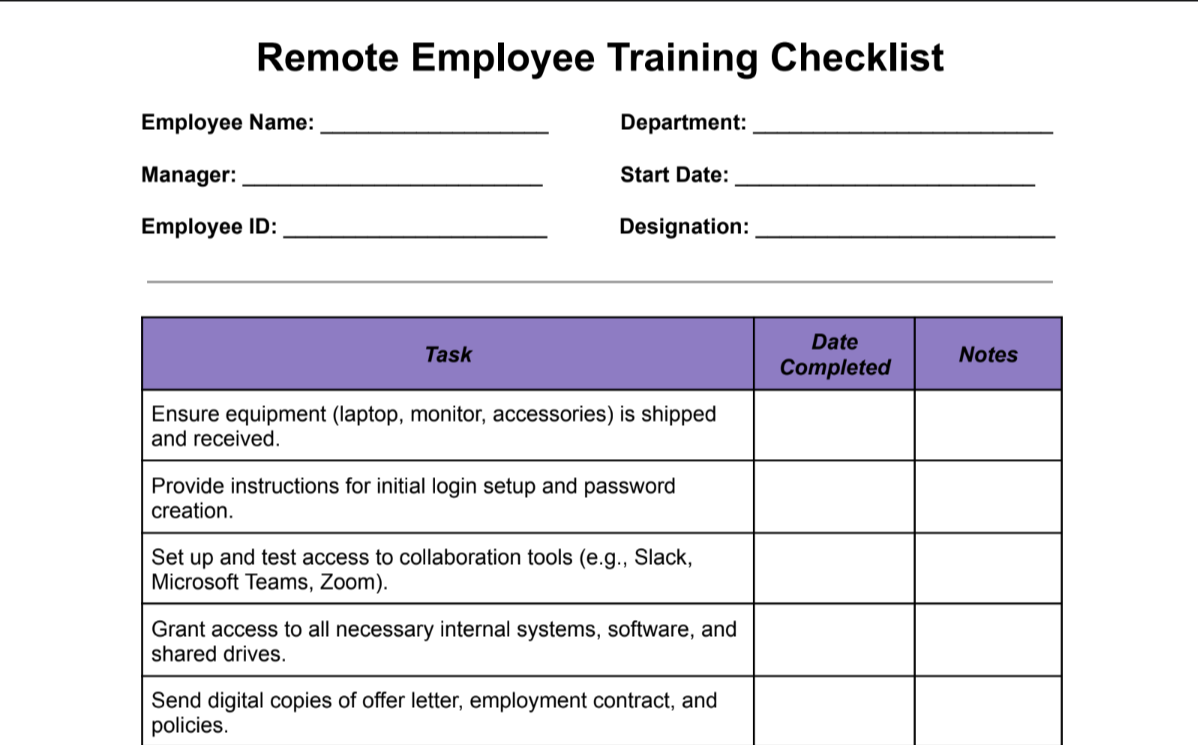
Training remote staff without a checklist often turns into chaos. People are scattered across time zones, some miss meetings, and others never get the right tools set up. This is where a proper remote employee checklist covers the basics.
It includes things like login setup, collaboration tools (Slack, Teams, Zoom), company culture orientation, and time management guidance. Moreover, with one-fifth of the workplace potentially feeling disconnected, this checklist helps keep them informed.
This standardizes expectations, ensures no one gets left behind, and helps HR track progress more easily. Employees feel supported, even if they’re miles away, and that support keeps them productive and connected.
Download the Remote Employee Checklist PDF
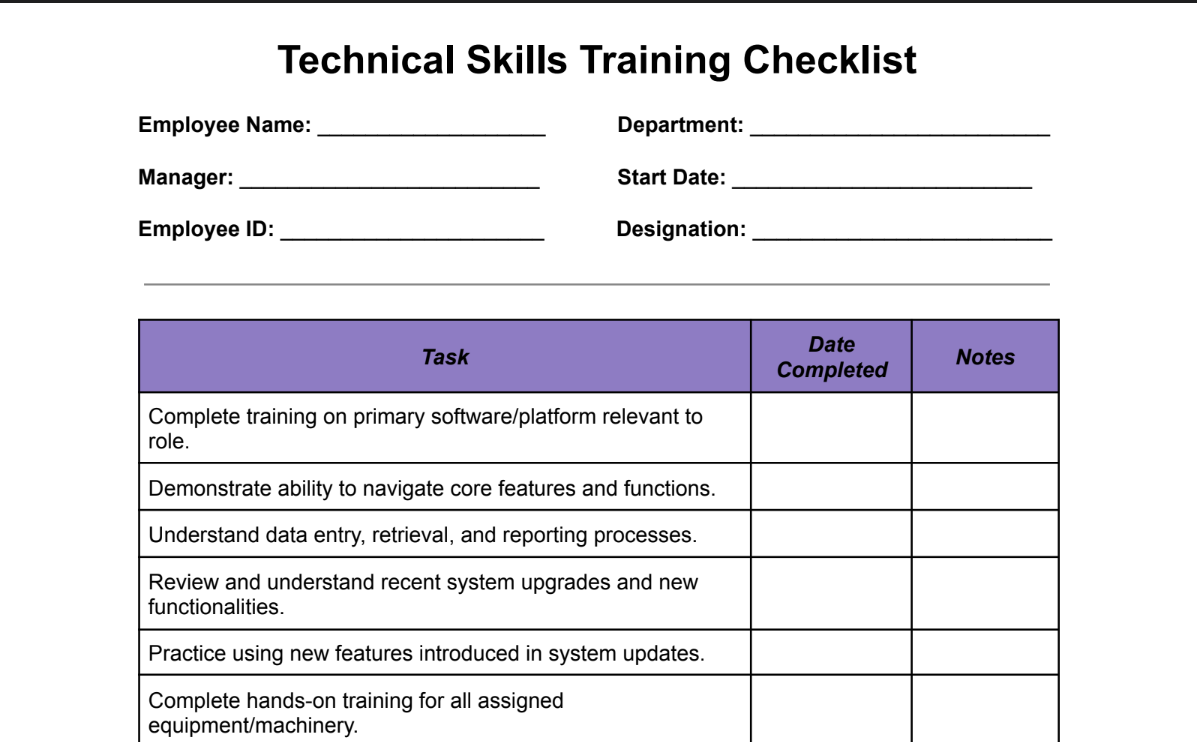
Technical training checklists are about sharpening the tools employees need for their specific roles. In this list, you’d find points such as learning new software, understanding system upgrades, or mastering equipment in manufacturing settings.
Without a checklist, it’s easy for you to miss out on the crucial details, which leaves employees half-trained. It’s also backed by numbers showing that 92% of workers perform better in their jobs due to workplace training.
That makes this checklist essential for making sure employees can actually do the work they’re hired to do.
Download the Technical Skills Checklist PDF
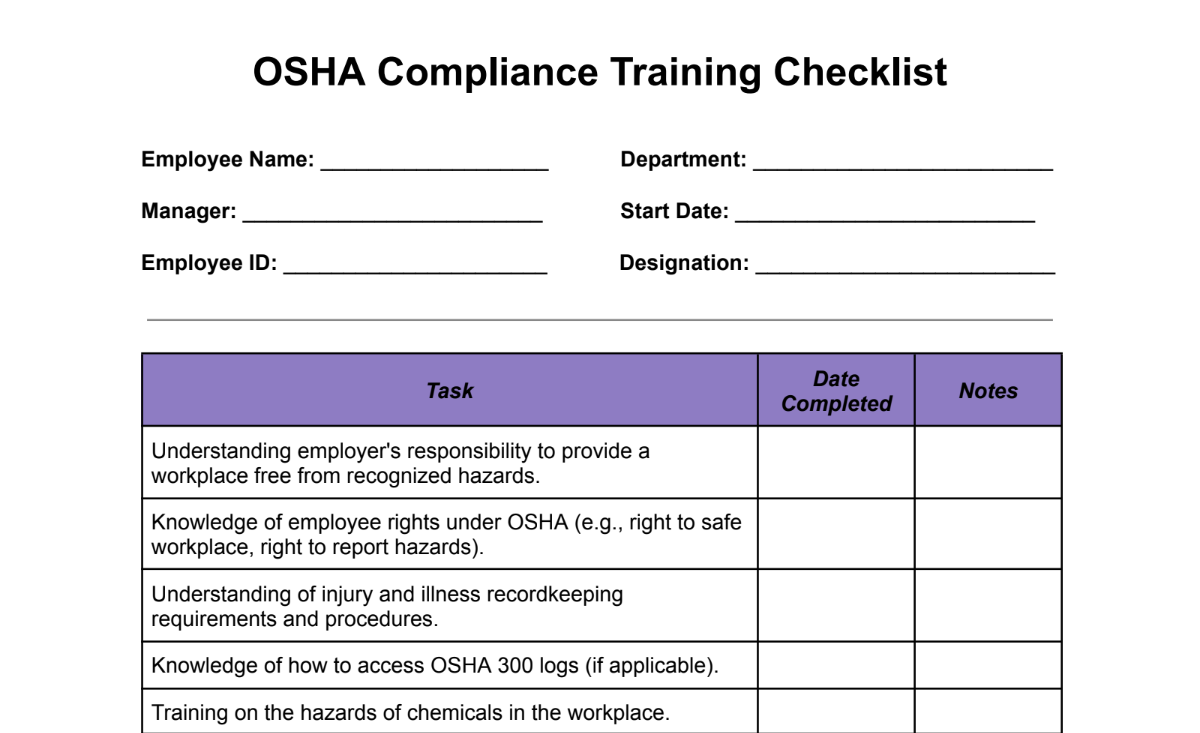
An OSHA compliance checklist is the safety net for workplace health and safety. This checklist consists of hazard communication training, protective equipment guidelines, fire drills, and proper reporting procedures.
In industries like construction or manufacturing, these checklists are a lifesaver.
The Bureau of Labor Statistics reported over 2.8 million nonfatal workplace injuries in private industries in 2022. Numbers like that highlight that the stakes are pretty high in such sectors.
By sticking to an OSHA checklist, HR ensures training covers all safety regulations, reducing liability while protecting employees. Remember, safety equals higher productivity.
Download the OSHA Compliance Checklist PDF
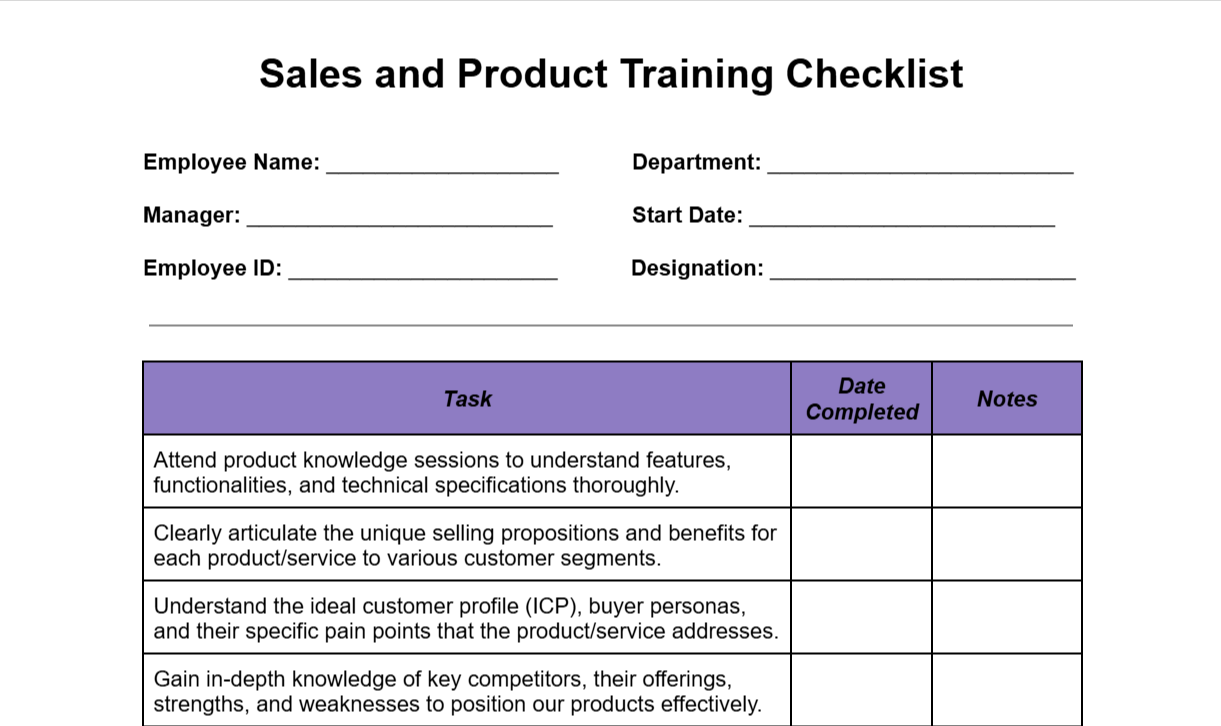
For marketing professionals, a sales and product training checklist is a must. You’ll find items like product knowledge sessions, objection-handling exercises, pitch rehearsals, and role-play with real-world scenarios in this.
If you don’t have one, you might have to rely on trial and error, which can cost both time and revenue.
It’s the kind of gap that defines leaders. When your team follows a checklist, they know the product inside out and understand how to present it to customers in ways that increase conversions.
Download Sales and Product Training Checklist PDF
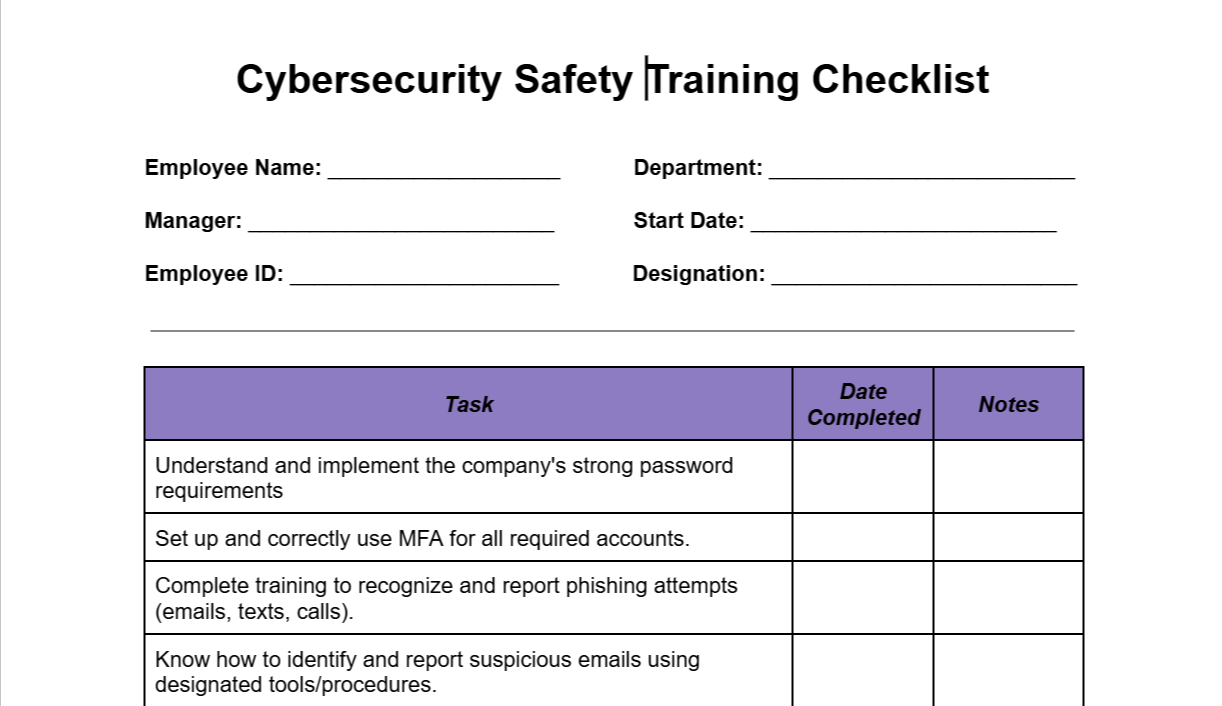
The last training checklist format on our list is the cybersecurity safety training. As you might be aware, cybersecurity threats are on the rise. And out of those successful breaches, 74% are due to human error.
This shows how important it is to train employees on safe digital behavior, and that’s where this checklist comes in handy. It includes points such as password security practices, phishing awareness exercises, data handling protocols, and response steps in case of a breach.
Each of these tasks is like guardrails, which make sure employees don’t accidentally open the door to an attack. In the bigger picture, this kind of training builds trust with customers who want to know their information is safe.
Download Cybersecurity Safety Training Checklist PDF
Have you ever noticed how easy it is to miss small but important details during training? That’s exactly why a training checklist matters. It keeps everything organized and up-to-date. Here’s how you can build one that’s clear and easy for anyone to follow.
Your first question should be, “What skills, knowledge, or behaviors do employees actually need?”
This is the first step in training needs analysis. It helps you spot the gaps between where your team is now and where they need to be. Without this, your checklist risks being filled with guesswork instead of meaningful training items.
Once you identify the skill gaps, translate them into specific, actionable goals. For instance, instead of saying “improve communication,” set an objective like “teach employees how to use active listening in client calls.”
Clear objectives guide what goes into the checklist and keep the training focused on measurable results.
Next, break the objectives down into smaller actions. This might include reading materials, hands-on exercises, role-playing activities, or software demos.
Alongside tasks, list the resources employees need, such as training documents, videos, or tools. The more complete this list, the easier it is to make sure nothing is missed during execution.
A checklist only works if people know who’s responsible for each task. So, don’t forget to add names or roles next to every item. This increases accountability, and you know what each person needs to do.
For instance, note whether HR, a department manager, or a mentor will handle each part of the process. This prevents confusion and ensures follow-through.
In the end, a training checklist works best when it follows a clear and easy-to-read format. Here are the elements that should be included in the checklist:
This format gives structure to the checklist, making it easy to follow, repeat, and update over time.
A training checklist format is only useful if people can actually follow it. Overcomplicating things often makes employees skip steps, while poor formatting reduces its value. Here are a few best practices to make your checklist practical:
The first step is to keep things simple. A checklist should focus only on the essentials to guide employees step by step without overwhelming them.
When tasks are broken down into smaller actions, employees feel less pressure and are more likely to follow through. That simplicity builds trust in the process.
Once you simplify the structure, you also need to simplify the language. Technical jargon or abbreviations slow people down and create uncertainty.
By using plain language, you can make sure both new hires and experienced staff understand the training checklist format. Clarity in language makes the simple structure even more effective.
Clear wording and structure are important, but accessibility matters too. Paper checklists often get misplaced or outdated, which can be frustrating for employees.
However, a digital checklist solves this problem because it’s easy to update, share, and track in real-time. Platforms like Coursebox even let you connect these checklists directly to training modules for smoother adoption through an AI LMS.
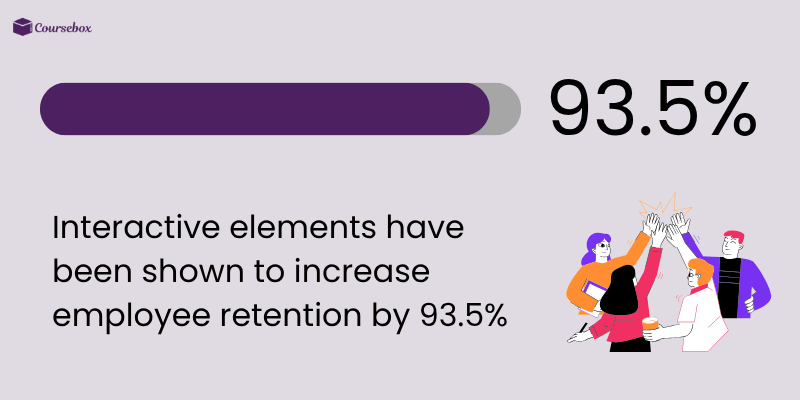
Want to know a way to increase employee retention by 93.5%?
Use interactive elements in your training checklist. Adding elements like checkboxes, quick links, or short videos can turn this checklist into a living part of your training. Remember, employees don’t just read, they engage.
This active participation makes training stick better and transforms the checklist from a static document into a practical learning companion.
A well-structured training checklist format eliminates the guesswork associated with training. It keeps tasks organized and reduces the risk of missing crucial steps. In short, it makes training faster and more reliable.
However, even the best checklist falls short if it isn’t paired with engaging and helpful training materials.
That’s where Coursebox comes in.
With our platform, you can generate interactive AI-generated training videos, assessments, chatbot tutors, and connect a checklist to it.
Don’t just stop at a checklist when you can deliver a complete learning experience.
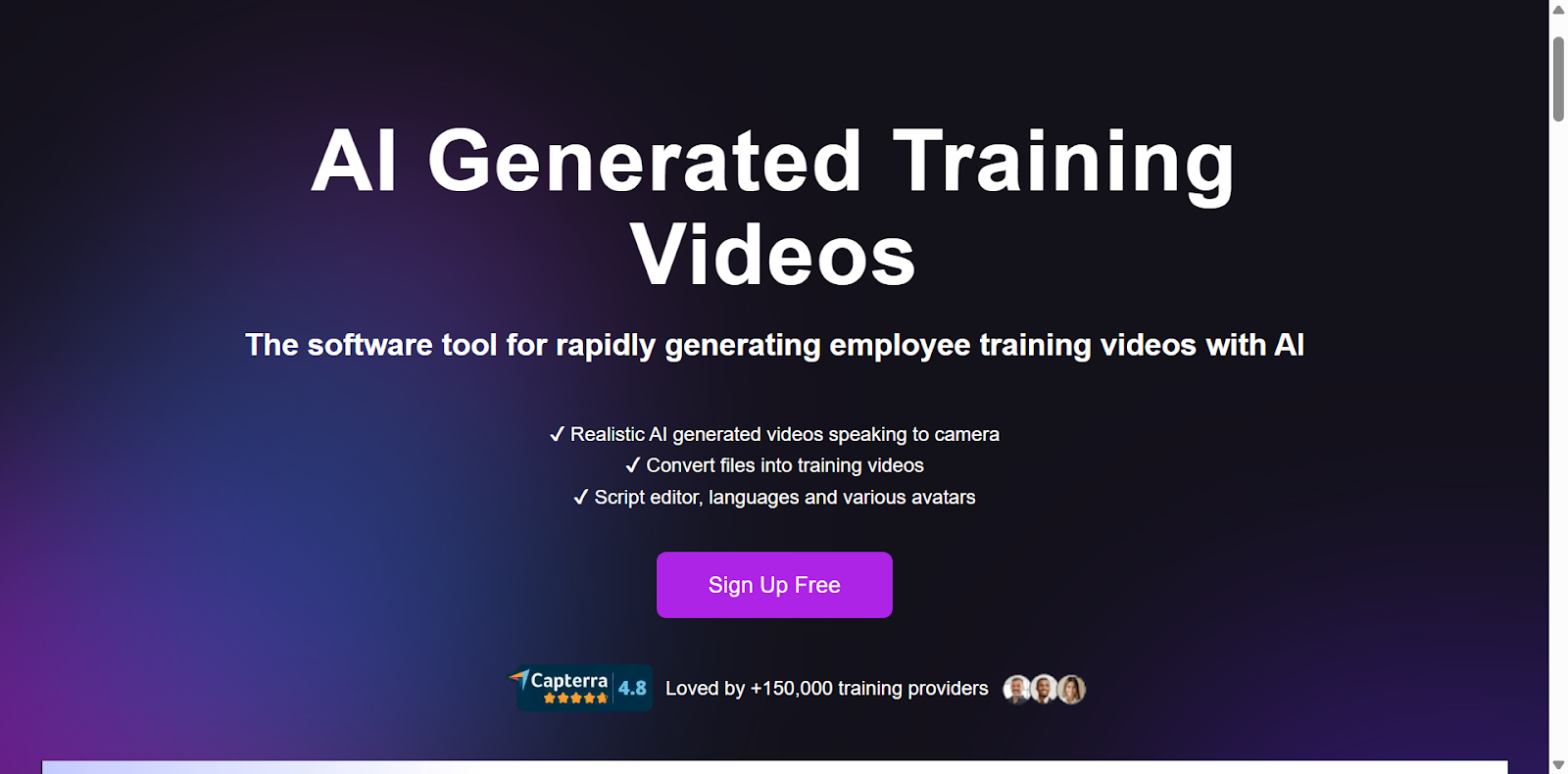
Sign up for free with Coursebox today and change the way you offer training!
To make a digital training checklist, you can use project management apps like Trello or Asana, or go for specialized training platforms. For instance, Coursebox makes it easy to integrate a checklist with its LMS, embed training content, and track learner progress, all in one place.
The main purpose of a training checklist is to ensure consistency and completeness. It acts as a structured guide so trainers don’t miss any important steps. Moreover, this checklist helps learners clearly see what’s expected of them.
A training plan is a broader strategy that outlines learning objectives, timelines, and methods. On the other hand, a training checklist is a practical tool that lists step-by-step tasks to execute a plan. Simply put, the plan is the blueprint, while the checklist is the instruction manual.
A training checklist should be updated regularly, ideally every time processes, tools, or compliance requirements change. Many organizations prefer to review it quarterly or annually, but the safest approach is to update it immediately whenever there’s a new policy, regulation, or organizational switch.
